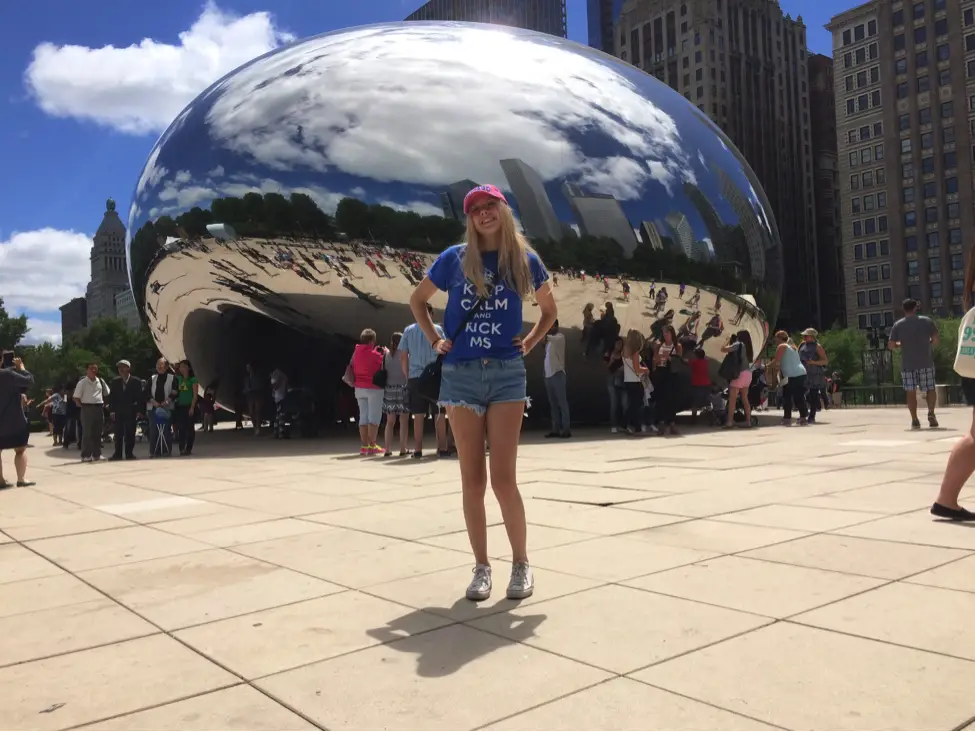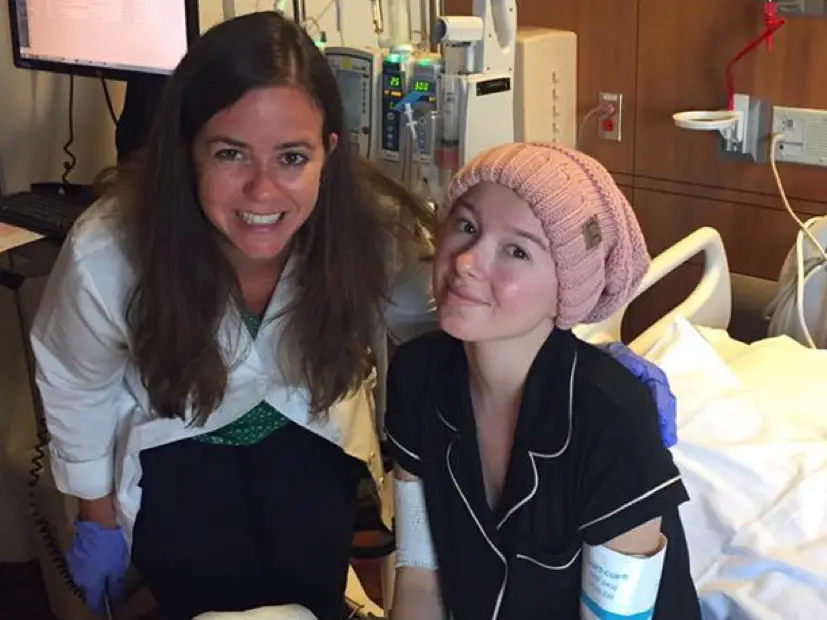Alexa Silvers is a college student, survivor and an all-around amazing human being. The biggest obstacles most of us had to face at sixteen were hormonal acne and a bad breakup. Silvers had to deal with multiple sclerosis. The autoimmune disease known as M.S. attacked her legs and put her in wheelchair. The doctors told Silvers that treatments could help, but that ultimately her condition was permanent.
They were wrong.
Through it all, Silvers kept a faithful mind, putting her efforts into her treatment and researching a cure. Then, when researching radiology courses, she stumbled upon stem cell research. With the help of her mother, many charitable donators and a staff of skillful doctors, Silvers was cured after having M.S. for four years.
Now, this University of Nevada at Reno student is making an effort to get the word out on stem cell treatments.
Tylah Silva: What was it like being diagnosed with M.S. at 16?
Alexa Silvers: It was completely life changing. I suddenly felt like an outcast, and felt like I was dealing with an issue that even my closest friends didn’t completely “get.” I kept it a secret as best I could, but as my condition worsened, it became harder and harder to hide.

TS: Had you ever heard about M.S. before you were diagnosed?
AS: I had never heard of it until I started experiencing weird symptoms. Every Google search led me to undeniable M.S. When I brought the possibility up to my physician, she actually laughed and told me it was impossible for someone my age to have a disease like M.S.
TS: Were you frightened by your diagnosis?
AS: I was terrified. The scariest part of multiple sclerosis is its unpredictability. I was already legally disabled at 16, and I had no idea if I would wake up one day not able to walk suddenly. It was a constant struggle, countless failed medications, neurologists telling me that patients with images like mine should already be in a wheelchair, and that every day I wasn’t I should be cherishing.
TS: What methods did you use to cope with your ailment?
AS: I am very strong in my faith. I notice that some people, when faced with adversity, tend to adopt a victim mentality and distance themselves from church and all support, but I made a conscious choice to do the opposite. I surrounded myself with people who helped me stay hopeful even when things weren’t looking great.
TS: How did your family and friends react?
AS: My family and closest friends were amazing, I did not want to be treated differently, and they were really great about making sure things still felt normal. Although, I think a lot of people didn’t really understand, and to this day still don’t. It was a lot of “but you look fine.”
TS: How did you stumble upon the stem cell research?
AS: I was running out of options as far as common M.S. treatments go. I had just relapsed on my third therapy, and decided there had to be a better option than a medication that only slows disability progression down 40 percent of the time. I watched M.S. news articles closely, and one day came across an article on a stem cell treatment that was successfully halting M.S. in England.
I immediately began searching on clinicaltrials.gov for a similar study in the U.S. I found one that Dr. Richard Burt had been conducting in Chicago for over 10 years. It had almost a 90 percent success rate in stopping disease progression. I just remember thinking, this has been happening since before I was born, and none of the many neurologists I have seen have even thought to mention it. This is a government trial with results posted in JAMA, and there’s no way they haven’t heard of it. It really is a disservice to autoimmune patients worldwide.
TS: Have you heard any other stem cell success stories that have inspired you?
AS: Hundreds! I met so many other patients, even in just the two months I was in Chicago for my transplant. It is the most effective treatment for autoimmune disease, and it is saving lives.
TS: Do you have any thoughts about the future of U.S. healthcare as someone who is affected so personally by it?
AS: This experience has been very eye opening to where this country’s healthcare priorities lay. The fact is, a cure for autoimmune disease takes money away from big pharma. With all the successful trials already conducted with HSCT, statistically there is no logical reason it is not yet approved for treatment of MS. Stem cells have so much potential for future use; I have even seen ALS being treated with a similar protocol in the news very recently.
TS: I saw your Go Fund Me page that hit over its $115,000 goal. What was it like to get that kind of support?
AS: I never expected that level of support. It just went viral overnight. I remember the amount was stagnant for weeks, and one morning I woke up and it was over eighty thousand. Every time I refreshed the page it went up even higher. I was crying all day, I couldn’t believe this was all happening so quickly. For the first time in years, I felt without a doubt that everything was going to turn out okay.
TS: What is like being M.S. free after so long?
AS: It’s very surreal. I don’t think I’ll even completely believe it until I get my repeat images. It’s crazy trying to comprehend that this is it. I notice improvements all the time; for example, I used to have to hug the rail on stairs and slowly guide myself down, and now I fly down hands free most days, not even thinking about it. I feel like I have my life back, and it’s the biggest blessing I have ever received.
TS: What is your relationship with your body now?
AS: I feel much more confident. Looking back at what I was able to get through reminds me not to sweat the little stuff. Being diagnosed with a chronic debilitating illness at 16 and completing an intense stem cell transplant three years later is not a small feat. I try to remember all I was able to accomplish.
I have lingering fears of course. This treatment doesn’t heal existing nerve damage immediately, so I still have days where my symptoms resurface. I have to remember not get discouraged by the bad days; recovery is a roller coaster.
TS: What are you hoping for by getting your story out?
AS: I am hoping that this story can get to as many people as possible. Millions are affected by autoimmune disease or know someone who is, and if one person pursues a stem cell transplant after hearing my story, that makes it all worthwhile.
TS: What do you want people to know about MS or stem cell research?
AS: I want to make sure people know that if you choose to pursue a stem cell transplant, it may well be one of the hardest things you ever have to go through. At times it will be scary; you may feel weaker than you ever have and you may question your ability to cross the finish line, but a lifetime with an unpredictable chronic illness is much more terrifying. This is the best treatment out there. It gives second chances and a newfound appreciation for what it means to be in good health.
TS: What’s your next step?
AS: I will be returning to Chicago periodically for the next 5 years to get follow-up imaging. These MRIs will confirm my M.S. is in permanent remission. In the meantime, I am back at school pursuing a degree in Nutrition and Dietetics. I plan to take my life back and live it to the fullest. Never take your good health for granted, it is one of the greatest gifts you could ever receive.










My daughter just had this done in Mexico. She is already walking better and has more strength in her legs and balance. Unfortunately even though Mexico is a lot less money than Chicago she still has not raised enough money to pay for her treatment. https://helphopelive.org/campaign/9793